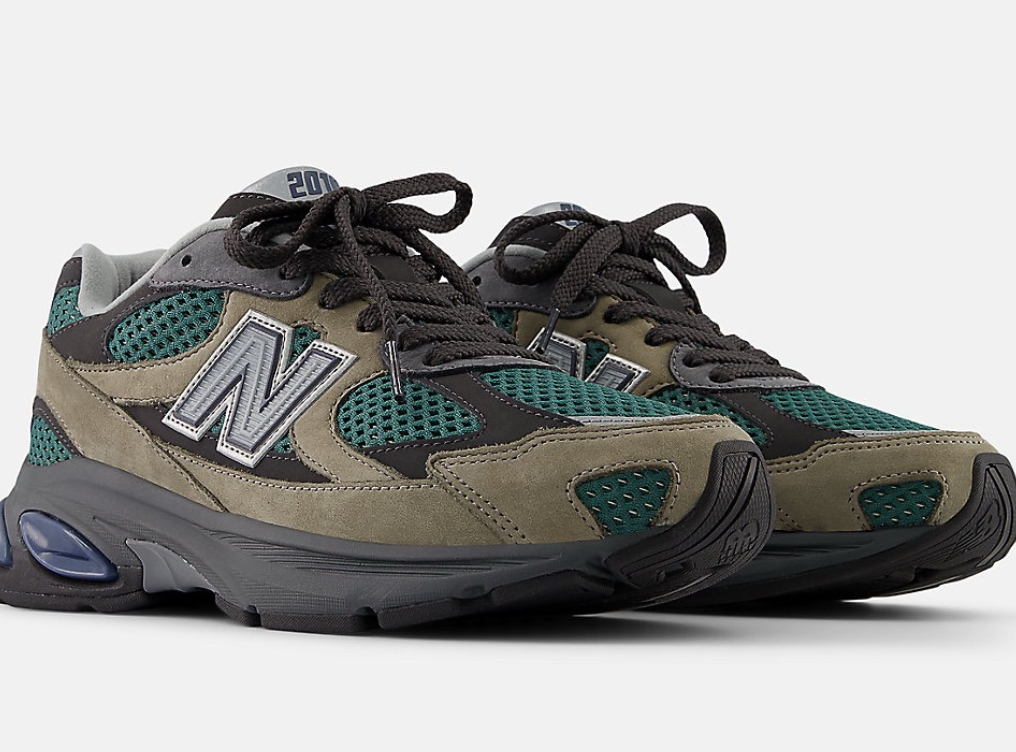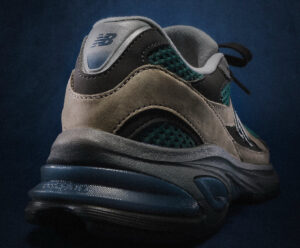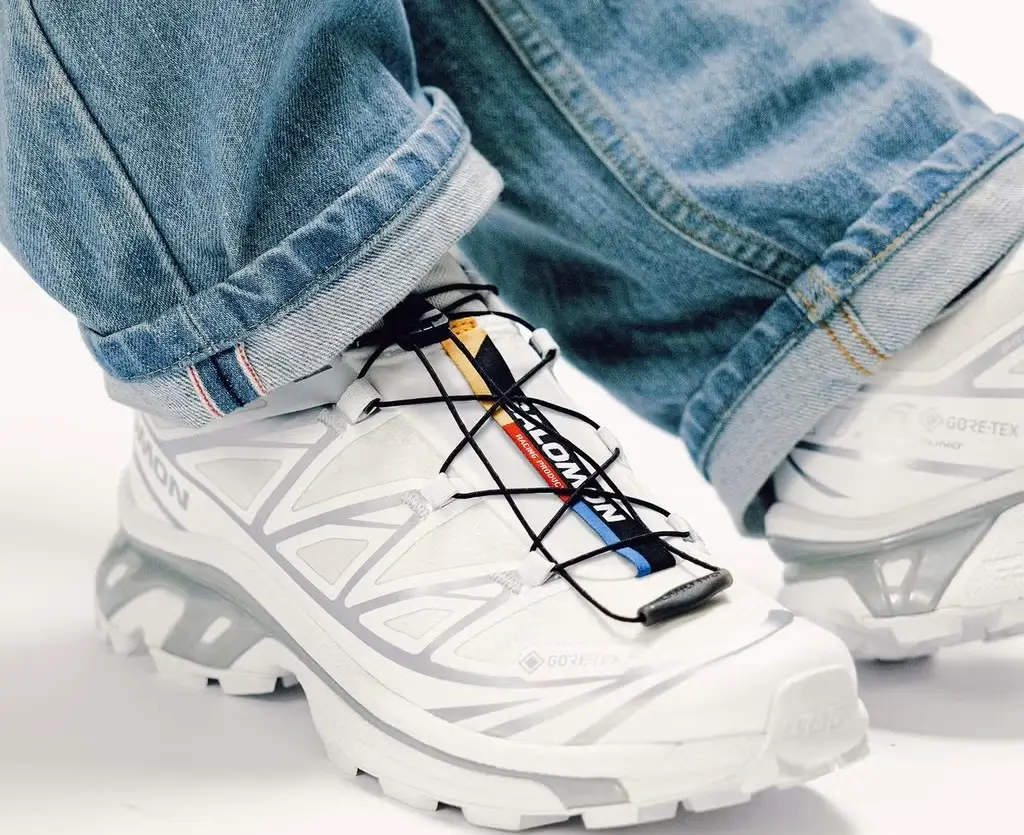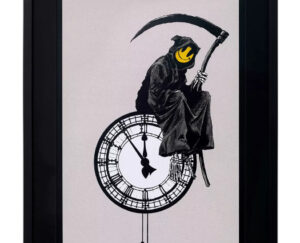In the cyclical arena of footwear design, few silhouettes manage to transcend eras while still feeling entirely of the moment. The ABZORB 2010, a newly launched lifestyle shoe from New Balance, threads that rare needle — combining the kinetic excitement of futuristic design language with the warm familiarity of a bygone era. It’s a shoe that doesn’t merely nod to the past; it refracts it. It doesn’t just anticipate tomorrow; it wears it with confidence.
At the middle of the design is New Balance’s signature ABZORB sole unit, a cushioning system that first gained cult status in the early 2000s and remains beloved by sneaker enthusiasts and performance runners alike. For the 2010 model, that legacy technology is reimagined through segmented expansion, with the proportions enlarged to create a sculptural, almost architectural midsole. It’s bold, bulbous, and unapologetically dynamic — a visual centerpiece that doesn’t just support the foot, but commands attention.
This assertive underfoot base is paired with a diamond-knit mesh upper, a textural evolution of the more utilitarian meshes of the 2000s. Where those earlier materials emphasized breathability and technical structure, the diamond weave in the ABZORB 2010 introduces visual intricacy — a criss-cross pattern that reflects light and motion, creating a subtle sense of movement even when the shoe is at rest. It’s an upper that feels equal parts techwear and tactile design, bridging form and function in one fluid expression.
HERITAGE VS HYPER-MODERNITY
The ABZORB 2010 doesn’t exist in a vacuum — it draws directly from New Balance’s revered back catalog. Models like the 860v2, 991, and 2002R pioneered the use of segmented cushioning and chunky silhouettes long before the fashion world caught on. With that in mind, the 2010 isn’t a throwback — it’s a continuation. The model embodies a design logic where past and present aren’t opposites, but collaborators.
Yet what sets this model apart is how it avoids pure nostalgia. It’s not a reissue, nor is it cloaked in faux-vintage styling. Instead, the ABZORB 2010 reflects a progressive design ethos: taking the DNA of Y2K-era performance runners and pushing them toward something more graphic, more exaggerated, and more abstract. In doing so, it occupies the same cultural terrain as futuristic reinterpretations by brands like Hoka, Salomon Advanced, or Asics’ NIMBUS line — but with a distinctly New Balance cadence: understated, deliberate, and endlessly wearable.
THE VISUAL WEIGHT OF SEGMENTATION
In most shoe designs, the sole functions as a kind of foundation — an unseen layer of support. But here, the sole becomes a protagonist. Its segmented layout — think articulated foam pods — recalls modular engineering or the interlocking patterns of a mecha suit. Each section flows organically into the next, yet retains its independence, creating both visual rhythm and enhanced responsiveness underfoot.
This segmented approach is not simply aesthetic. It’s a performance-informed decision, allowing for better weight distribution and flexibility. It also provides a softer, more nuanced ground feel. For everyday wearers, that means extended comfort during long walks or urban movement. For style-focused consumers, it’s a statement piece — a shoe that announces itself with each step.
The sculptural dimension of the sole elevates the entire shoe’s silhouette. Paired with a relatively minimalist upper, the bulky base avoids heaviness. Instead, it grounds the shoe like a pedestal grounds a sculpture — commanding, stable, and vital to the whole.
MATERIALITY AND FUTURE-TEXTURE
The diamond-knit mesh deserves its own mention, not only for its aesthetic appeal but for what it signals: a return to textural storytelling in sneakers. In recent years, many designs have defaulted to either flat synthetics or overly engineered mesh. Here, the upper becomes a pattern of light and breath, catching shadows as the foot moves and offering just enough layering to intrigue the eye.
This choice also reflects a broader material movement: blending athletic durability with urban adaptability. The ABZORB 2010 doesn’t scream performance, nor does it flirt with fragility. Instead, it invites close attention — from the tactile weave of its upper to the micro-padding around the collar and heel. The colorways (often soft gradients, muted chromes, and industrial neutrals) only enhance this effect. It’s a shoe you can wear with cargo trousers, tailored sweats, or even a wide-cut trouser — a rare flexibility in the genre of hyper-functional footwear.
CULTURAL TIMING AND STREET-LEVEL RESONANCE
It’s no coincidence that New Balance chose to reintroduce a bold ABZORB silhouette in the midst of a wider cultural shift. Over the past three years, the fashion world has witnessed a full embrace of ‘ugly’ sneakers — not pejorative, but proudly subversive. Chunky soles, maximalist constructions, and distorted silhouettes have all become staples in the new era of streetwear and technical fashion.
Yet while many brands chase spectacle, the ABZORB 2010 keeps its cool. It doesn’t over-design. It doesn’t shout. It moves with a quiet assertiveness, confident in its blend of heritage and innovation. That approach has been core to New Balance’s renaissance in recent years: a series of choices that refuse hype for hype’s sake, and instead prioritize product integrity, design consistency, and longevity.
For a generation of consumers — especially younger footwear enthusiasts — this balance is essential. They want statement shoes, yes. But they also crave meaningful design lineage, comfort, and versatility. The ABZORB 2010 delivers on all fronts.
Flow
It’s hard not to see the ABZORB 2010 as the start of something larger — not just a one-off drop, but the rebirth of a design system. The success of the 2002R and the constant demand for 990-series models has already proven that New Balance’s ability to mine its archives is unmatched. But the 2010 model shows that the brand is equally willing to push forward — to reinterpret rather than replicate.
It’s likely we’ll see more iterations of this segmented sole unit in the coming seasons. Perhaps collabs with contemporary designers, perhaps limited-edition releases with bold colors or rare materials. But even in its base form, the ABZORB 2010 makes a clear statement: past meets present, not as tension, but as synergy.
No comments yet.









